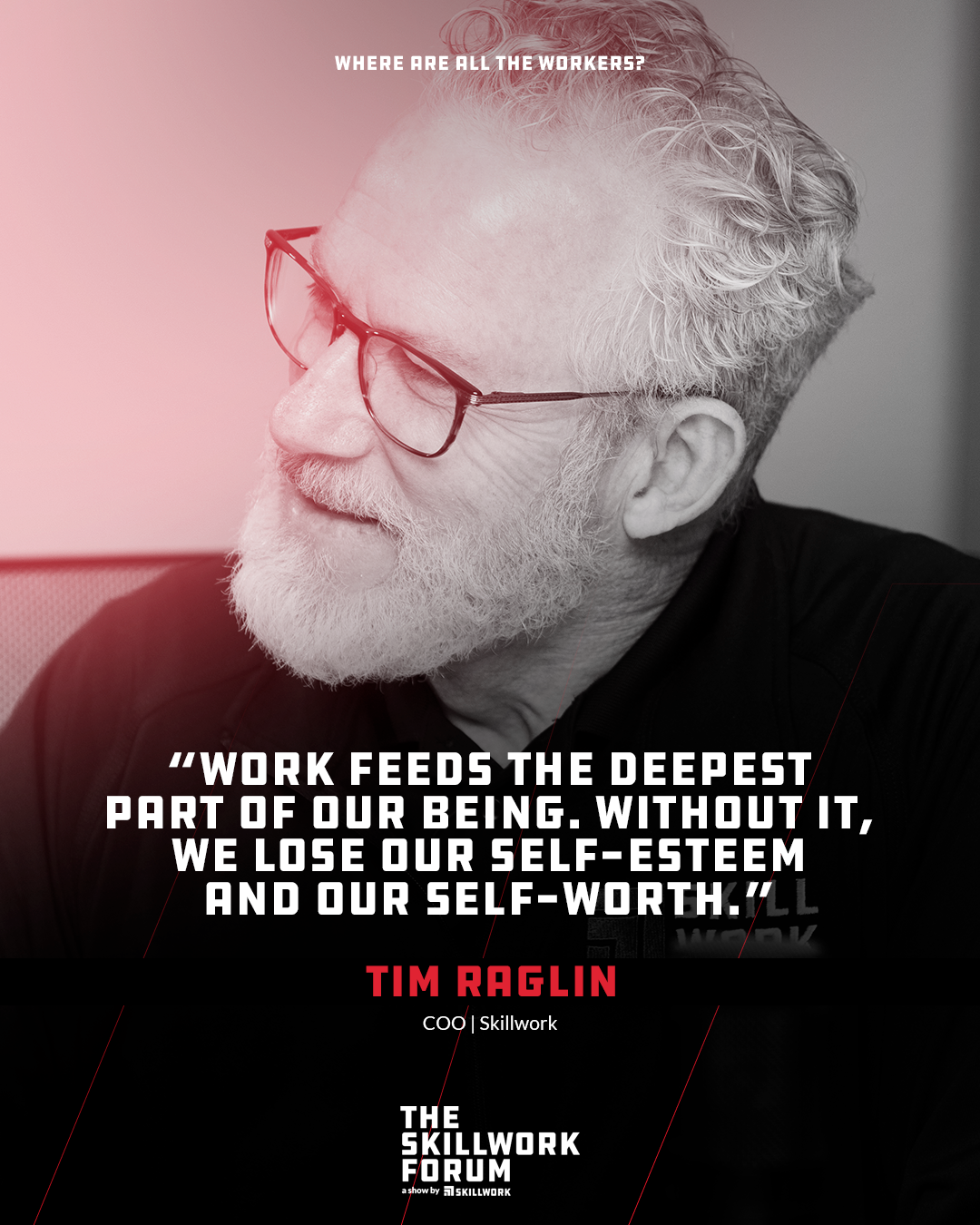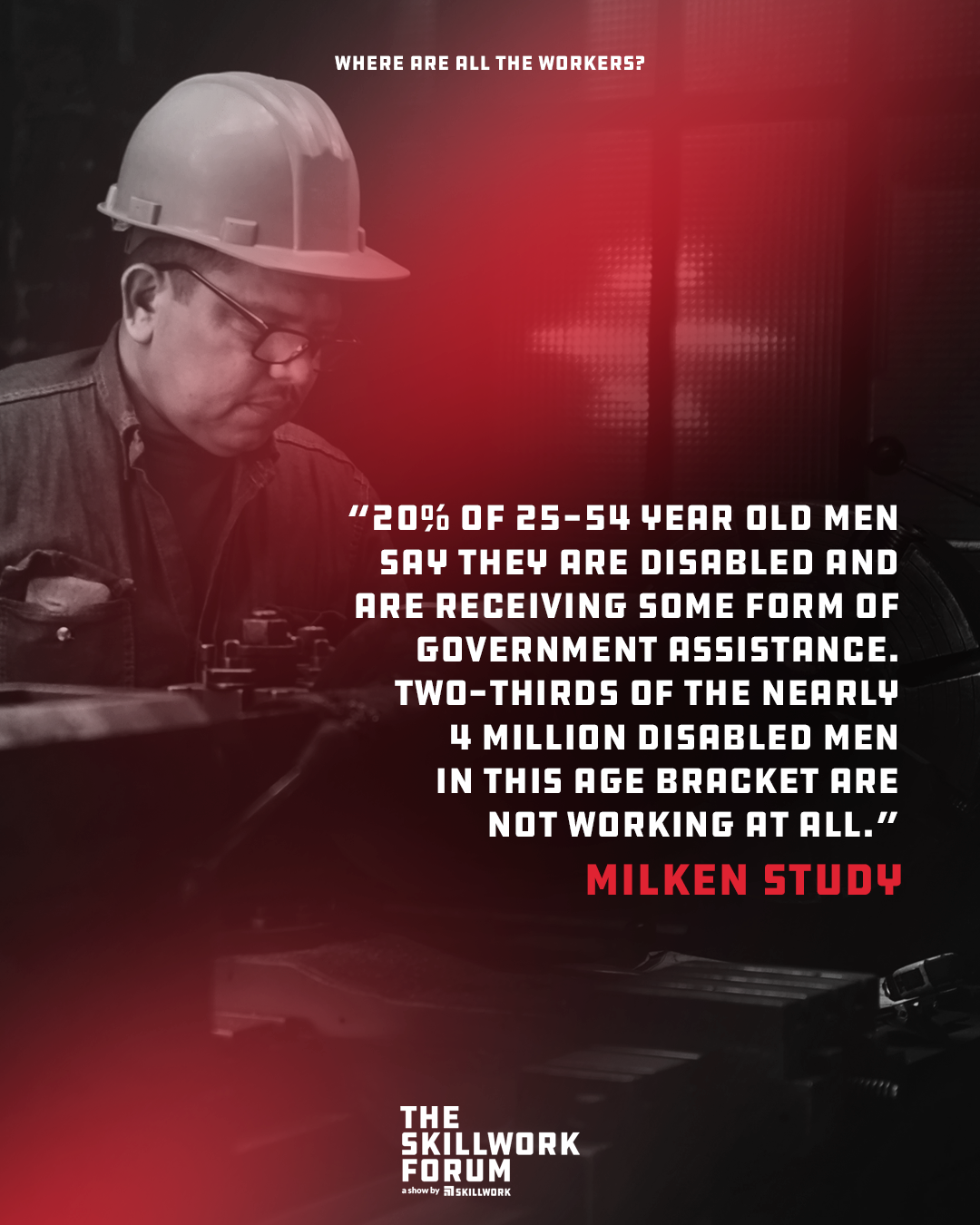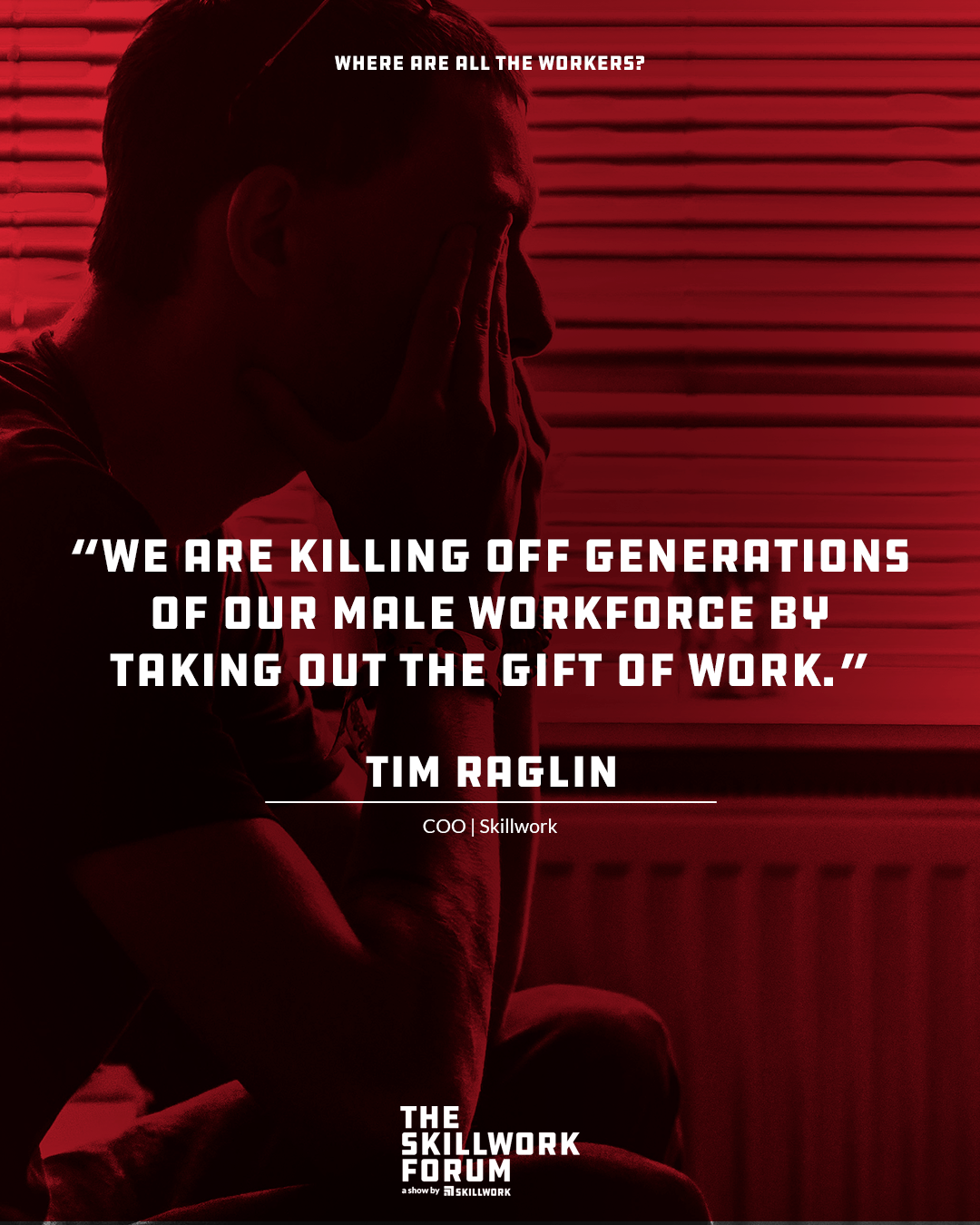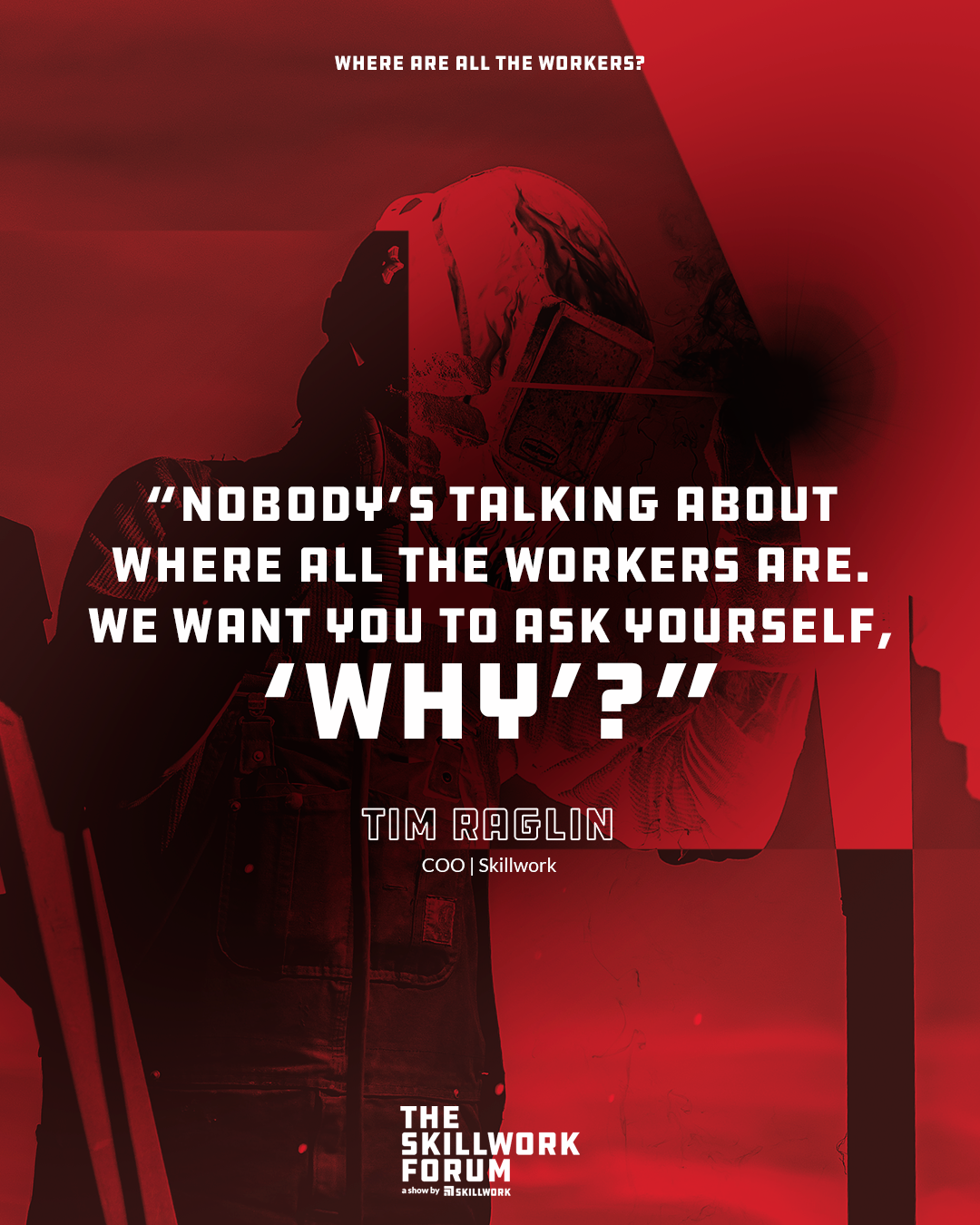What Happened to All the Workers?
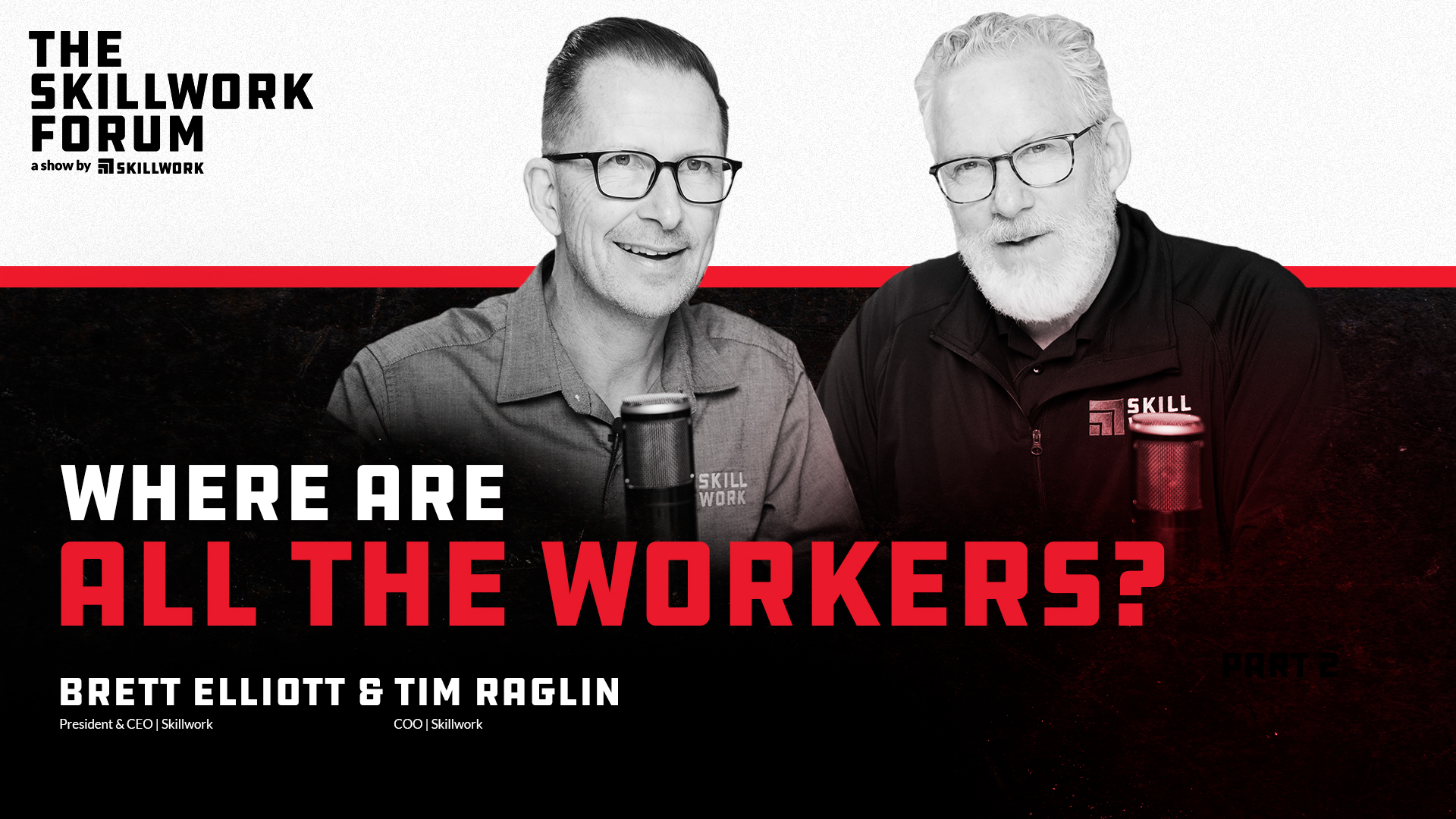
The population hasn't decreased, so what happened to all the workers? Let’s review some skilled labor shortage statistics to explain why there are so many unfilled jobs in the U.S.
What if we told you that, as of today, there are over 7 million able-bodied men between the ages of 24 and 54 available but are not currently working and are not even looking for work? These men don't even come into the equation of the unemployment figure because those are folks actively looking for work.
If you add in the underemployed, part-time, in school, incarcerated, freelancing, or doing gig-type work, the number is closer to 20 million. And these men have an estimated economic impact of about 1 trillion on the GDP.
According to the Milken Institute, in 1960, 97% of men between the ages of 25 and 54, and 86% of men 20 and older, had jobs. Today, the proportion of adult males who do not work is higher than at almost any other time in our history, and certainly since these statistics were tracked. At least 1 in 9 men between 25 and 54 years old and 1 in 5 between their early twenties and mid to late sixties are not working at all—three times the comparable figure from 1960.
In this blog, we discuss why staffing shortages are prevalent across all industries, namely the skilled trades, and answer some questions that come up when you consider these skilled labor shortage statistics.
Where Are Workers Going?
Current unemployment rates are hovering at 3.5%, which is historically low. However, that number is misleading because unemployment numbers are calculated based only on individuals who are out of work and have actively looked for a job in the prior month.
At Skillwork, we've been studying how more Baby Boomers are leaving the skilled trades than there are Millennials and Generation Zs coming behind them. This deficit is what we know to be a skilled tradesmen shortage. One of the things that accelerated the trade skills shortage was Covid.
When Covid happened, a lot of those tradesmen thought they'd work another 3, 4, or 5 years. However, when subsidies were given, people basically got paid not to work, and so they either retired early or just never returned. Government support is one of the main reasons for the current labor shortage.
Let’s take a look at some of the questions these skilled tradesmen shortage stats bring up to explain the labor challenges employers are facing today.
1. What are they doing with their time?
First of all, what are these guys who aren't employed doing with their time?
Most spend nine and a half hours sleeping; six and a half of those hours are spent sleeping during leisure activities. Of that leisure activity, about three and a half hours are watching TV. These non-working men spend almost the same number of minutes a day, not hours, minutes, caring for their kids, cooking, and cleaning as men with full-time jobs.
They're not taking the load off raising the kids and the family. As a matter of fact, they're filling up large swaths of their life doing leisure activities (TV, video games, etc.) Milken performed time-use studies where you track your time throughout a period of time, and the typical day of a male nonworker looked very much like that of you and me on our off day.
2. How are they making ends meet?
About a quarter of these able-bodied men have somebody else supporting them. And a fraction, probably a very small fraction, are living off of money inherited, or from a more prosperous time of their life. Maybe they made a killing in the stock market, back when the stock market was doing a little better than it is today!
The Milken article states that up to 50% of the non-working male heads of households (25 to 54 years old) are on Medicaid. They're collecting social security, disability insurance, or both. And about two-fifths are on food stamps or some type of additional support.
You could look at that and go, well, okay, so what's the big deal? Maybe they do need the support, but some don’t, and it’s creating a significant economic impact (i.e., a labor shortage), which is the bigger problem.
3. Why wouldn't they look for work?
So, the third question is why? Why wouldn't they look for work? Here are a few reasons.
- Under-skilled. They're under-skilled for the jobs that are available or for what they consider decent-paying jobs. And we've reached a point in our culture where it's socially more acceptable to be out of work than it is to take a lower-end job.
- Harder to return to work. The reality for a lot of individuals is the longer you're away, the harder it is to return. As an employer, if you look at a resume with a work gap, it always creates a question, so these guys are getting the short end of the stick.
- Low motivation. The motivation to work has been taken away by well-meaning government and charitable support. But we believe humans were created by God with an innate desire to work. “Without meaningful work, we sense a significant inner loss and emptiness.” – Tim Keller.
When you meet another person, especially male to male, what's one of the earliest questions you ask? What do you do? The desire to work is built into us. Without it, we lose our self-esteem and our self-worth. Our male workforce is dwindling by taking away the gift of work.
Tips for Finding Skilled Workers in a Trade Skills Shortage
We can't give you the five steps to tap into this 20 million and solve the shortage of skilled trade workers. There's no magic wand, no single solution, and if there were, people would be talking about it. However, here are a few tips we can give to help you attract some of these unemployed men back into the workforce:
- Flexible work schedules
- Part-time options
- Training opportunities
- Four-day work weeks
- Career advancement
- Mental health benefits
- Childcare support
- Competitive wages
If you’re struggling to find skilled workers, given these skilled labor shortage statistics, contact Skillwork. As America’s premier skilled labor recruitment agency, we exclusively connect employers with outstanding tradesmen across the U.S.
We remain hopeful despite these headwinds because we place our confidence in something greater, far greater than us. We put our faith in a God who’s not surprised by all these things. We trust Him, but we also believe that we are called to be action-oriented men that work, and we invite you into that as well.
Until next time, thanks for joining us on The Skillwork Forum. 